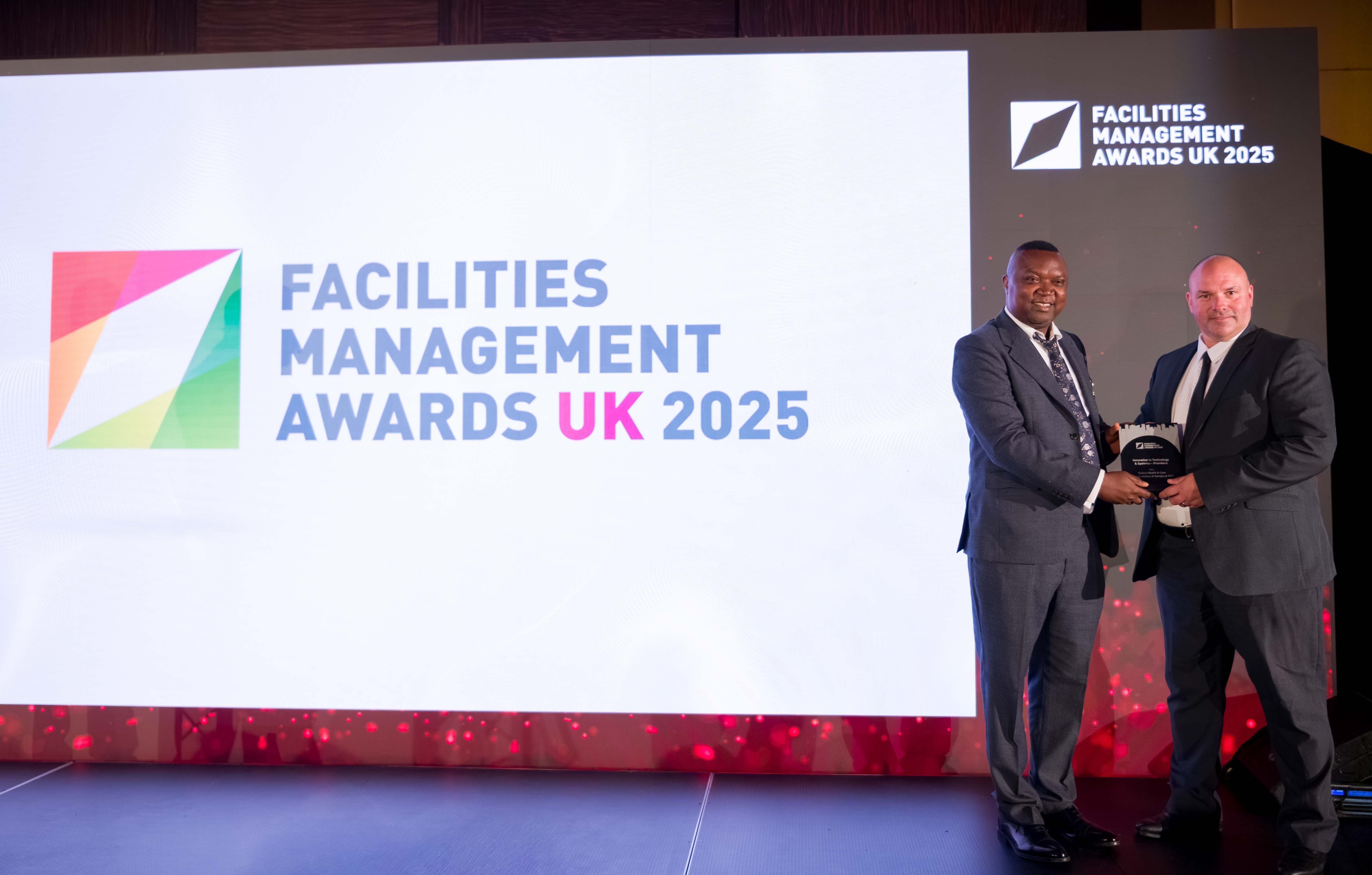Trio of wins for Sodexo at the inaugural FM Awards UK

Kevin Muckle
Head of Soft Facilities Management, Sodexo UK & Ireland
As Head of Soft Facilities Management for Sodexo UK & Ireland, I’ve had the privilege of seeing first hand how cleaning has evolved from a traditional, manual task into a technology led, data informed and experience-centred profession.
According to the British Cleaning Council (2024), the cleaning, hygiene and waste sector now contributes nearly £60 billion to the UK economy and employs around 1.49 million people—over five per cent of the total workforce. What was once viewed as a background service is now front of mind in how people judge workplaces - a key enabler of workplace experience, sustainability and operational excellence.
"cleaning, hygiene and waste sector now contributes nearly £60 billion to the UK economy"
Meanwhile, the cleaning landscape in the UK has changed dramatically over the past few years. Advances in digital tools, smart machines and sustainable chemistry have reshaped how services are delivered, measured and valued.
The inclusion and adoption of internet of things (IoT) devices has transformed the way we manage cleaning operations. Sensors, NFC tags, QR codes and connected devices now capture live data on occupancy, washroom usage, air quality and bin fill levels. This data allows cleaning teams to clean by demand, not by diary, driving a proactive service delivery.
At Sodexo, IoT has allowed us to move from reactive cleaning to a truly responsive model. Supervisors can now redeploy staff based on real-time usage analytics, ensuring resources are used where they have the greatest impact.
The outcome is improved user satisfaction, measurable efficiency gains and reduced environmental footprint. One recent Sodexo pilot site recorded between 15-20 per cent reduction in reactive call-outs after sensor-enabled deployment.
Automation continues to advance at pace. Robotic scrubbers, autonomous vacuums and AI-guided dryers are now a proven part of daily operations, particularly in large or high traffic environments. These machines deliver consistent standards, negate operator fatigue, collect valuable operational data and cut chemical and water use by up to 70 per cent compared with traditional methods (Cleaning & Hygiene Suppliers Association, 2024).
Modern robotic scrubber dryers use AI-driven navigation systems, LiDAR sensors and obstacle detection to operate safely and efficiently. Instead of replacing people, these machines redefine their roles. Operatives are now machine supervisors, technicians and quality controllers. Upskilling our teams is therefore critical to maximising the benefits of automation.

Sustainability remains at the centre of every innovation. The industry is moving beyond simple chemical reduction toward circular economy thinking. Manufacturers are also developing bio-based concentrates, closed-loop systems and energy efficient machinery.
At Sodexo, we’re applying our Net Zero 2040 roadmap to cleaning, embedding sustainability into every level of our cleaning operations, from supplier selection to waste management.
Touchpoint cleaning, microfibre technology and ozone systems all reduce environmental impact whilst maintaining hygiene excellence. Microfibre systems alone cut water use by up to 70 per cent and chemical use by 90 per cent (Sustainable Facilities Forum, 2024). We now combine these with real-time sustainability dashboards so clients can see verified impact, not just claims, across every site.
Microfibre systems cut water use upto 70% and 90% of chemical use
compared to traditional methods (Sustainable Facilities Forum, 2024)
Digital transformation is no longer considered new…it’s the new normal. Cleaning management platforms now provide live dashboards, automated quality reports and predictive service alerts. Managers use data to make informed decisions about deployment, performance optimisation and user sentiment.
This visibility allows us to demonstrate value to our clients with evidence, not assumptions. It ensures assurance, transparency, accountability and drives a culture of continuous improvement that aligns directly with clients’ workplace-experience metrics. Our goal is to connect every cleaning task to a measurable impact on how people feel in the space they occupy.

AI is increasingly central to cleaning innovation, influencing both equipment and management processes including improving compliance.
Within machines, AI optimises routes, monitors energy and water use and learns from environmental variables such as footfall patterns or humidity. In management systems, AI is being used to forecast demand, schedule work and even predict where services levels may drop.
The next step is full integration where AI links to IoT data, robotics and digital platforms to create self-adjusting service models providing a true output specification. This will allow us to balance quality, cost and sustainability dynamically and in real time. Think of it as moving from ‘smart machines’ to ‘intelligent service ecosystems’ that continually learn from how workplaces are actually used.
Cleaning has evolved into a professional, data-driven and human-centred discipline built on technology, sustainability and continuous improvement. The shift has elevated the skill, status, and pride of our people, transforming cleaning from a cost centre into a value generator.
As technology continues to advance, our mission remains the same: to provide a clean, safe and sustainable environment that enhance the everyday experience and wellbeing of those who use them.
The future of cleaning isn’t about replacing people with machines, it’s about equipping people with better tools, better data and better opportunities to delivery excellence.
Are you ready to take your facilities management to the next level?
If so, let's talk.
Get started with Sodexo
Corporate services